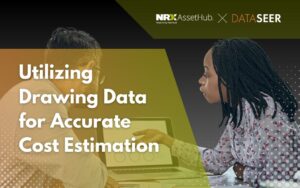According to Experian, enterprises lose up to 30 percent of potential revenue due to poor data management and lack of consistency across systems. Clearly, this is more than inefficiency. It is a serious business risk. Today, companies manage an expanding mix of platforms. These include EAM systems, CMMS, enterprise resource planning (ERP), and cloud platforms. Consequently, ensuring data consistency is not only a challenge but also a necessity. This is exactly where master data governance (MDG) shows its true value. It transforms disconnected data into a unified and trustworthy asset.

What Consistency Means in the Real World
Consistency in data involves more than just formatting. It also requires alignment across physical assets, CMMS platforms, and digital systems such as CAD files, P&IDs, and digital twins. In many large organizations, asset data is spread across multiple tools. These can include maintenance systems, asset performance management (APM) software, and engineering design platforms.
However, when asset identifiers or attributes differ between systems, confusion is highly likely. This inconsistency can lead to miscommunication and poorly coordinated maintenance or operational tasks. Moreover, it disrupts data-driven decision-making and reduces the reliability of analytics across departments.
For instance, imagine a global transportation company operating 15 regional hubs. In this scenario, each hub uses its own CMMS system. As a result, inconsistent asset naming could create widespread confusion. By implementing centralized MDG, the company could standardize its asset definitions. This change would likely enhance operational efficiency and lead to more accurate reporting.

Migrating Without Losing Your Mind
Migration is a critical area where MDG delivers measurable impact. When organizations transition from legacy systems to modern cloud-based tools, data inconsistencies often surface. Industry assessments show that a significant portion of equipment records contain formatting errors or duplicate entries during migration audits. Organizations that implement a structured MDG approach are able to validate and standardize their data before migration. This preparation helps them reduce risk, ensure system stability, and in many cases, avoid millions of dollars in corrective costs.
AI to the Rescue
Thankfully, AI powered tools now offer support in modern EAM platforms. These tools can process large datasets, flag inconsistencies, and suggest corrections. They can also automate many governance tasks. For example, AI might detect that “Pump A 101” in one system is “Pump A101” in another. It then recommends harmonizing the two.
These capabilities are game changers. Automation significantly reduces the manual burden on data stewards. Moreover, it makes long-term consistency easier to maintain. While AI cannot replace governance, it certainly enhances it.
The Long Term Benefits of Consistency
When master data is consistent, it improves everything from inventory management to asset performance tracking. Organizations can better implement preventive maintenance, reduce redundant purchases, and deliver accurate reporting for compliance and audits.
Moreover, consistent master data lays the groundwork for digital twin technologies. Digital twins rely on real world asset data that is synchronized and trusted. If that data is fragmented or incorrect, the twin becomes an unreliable tool.
In short, consistency enabled by master data governance is not just about order. It is about operational excellence, customer satisfaction, and bottom line impact.
Utilizing Drawing Data for Accurate Cost Estimation

The Challenges of Table Data Extraction

The Tedious Nature of Creating Piping Lists Manually

Share this article

